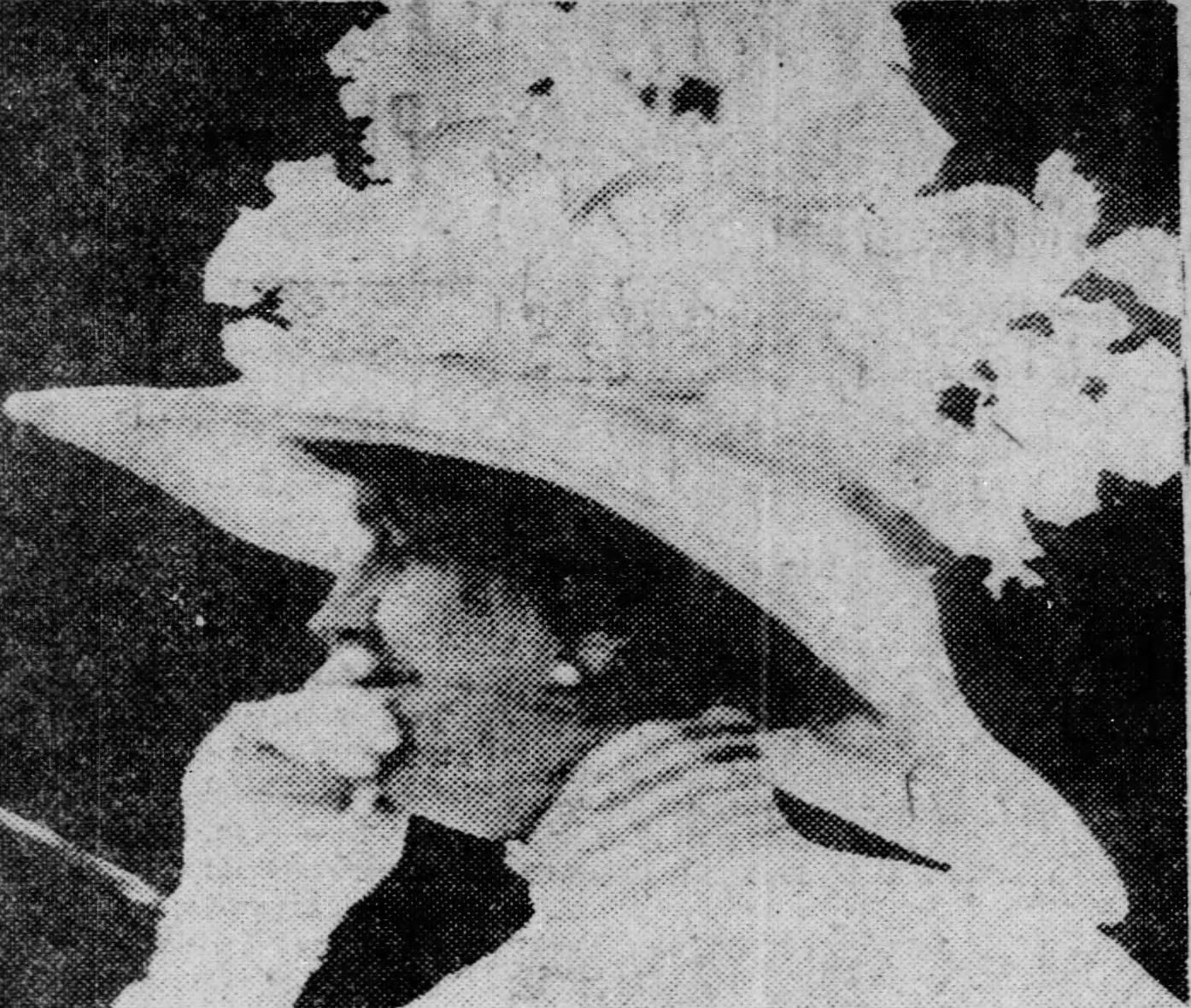This is the second installment of Charlotte Zureick’s four part true crime series, A woman around whom death lingered. If you need to catch up, here is the first installment. Grateful to Char for her coverage of a complex historical story. -SZB
With the news of a warrant for her husband’s arrest from Aiken, South Carolina, Mrs. Camilla Beach was spending a six day journey traveling from Cherbourg, France to New York on the ocean liner Kaiser Wilhelm II with her husband, Mr. Frederick Beach.

The Kaiser Wilhem II departed on April 17, 1912. Two days earlier, the tragedy of the loss of 1,496 lives in the sinking of the Titanic had made global headlines. Mrs. Beach had almost found herself a passenger on the Titanic until her husband abruptly changed plans, and now she found herself crossing over those same waters where bodies from the Titanic had yet to be picked up.
The voyage of the Kaiser Wilhelm II was described as “longer, but surer”. Apparently, the passengers of the ship were “perfectly contented” to deal with this time delay. The ship avoided the northern route due to the warning it took from Titanic’s fate, and the captain reported that no ice was seen. Normally going at a speed of 23 knots (equivalent to about 26 mph), during this voyage it was averaging 21 knots (equivalent to about 24 mph).
During her passage, Mrs. Beach stayed mostly confined to her cabin and was said to be inseparable from her husband, who had been accused of attacking her on the night of February 26th. In her confinement, she would would have plenty of time to mull over the impending investigation and questioning about that night.
The Attack of Mrs. Beach
On the evening of February 26th, Mrs. Beach had been brutally and almost fatally attacked at her front gate in the heart of Aiken, South Carolina. It was stated that her neck was slashed with a razor and she was beaten unconscious.
According to The Sun on February 27th, “Mr. Beach said that his wife could give no clue to the identity of the man who called her to the gate last night and slashed her throat, then tore her earrings from her ears, but that she was positive that her assailant was a negro who wore an overcoat too large for him.” Apparently the town had arrested several Black individuals as suspects; however, after great effort, no individual had been identified as the attacker.
And now there was talk of an alternative explanation: an unknown man in a gray suit in the Beaches’ yard on the night of the attack conversing with Mrs. Beach and a jealous, violent response from Mr. Beach.1
Pearl Hampton: Witness and Victim
Pearl Hampton had dealt with a much different experience of confinement in the aftermath of that night. She was a maid for J.B. Lyons, who was renting the property adjoining the Beaches, and she was both a witness and victim of the attack. A Black woman, she was reluctant to speak on the event or the race of the assailant.
The prosecuting attorney in the case, Robert L. Gunter, alleged that Pearl Hampton knew the identity of the assailant and the mysterious man in a gray suit and that she tried to intercept an attack of this mystery man by Mr. Beach. In the process, she was hit with a heavy pailing by Mr. Beach as he made his way to Mrs. Beach. A friend and supporter of Mr. Beach, Joseph Harriman was noted to say, “Pearl Hampton, between you and I, is the woman best qualified to tell you the true story of what happened that night.”2
Pearl Hampton had apparently been arrested in order to get her witness statement of the event. The brother of lawyer D.C. Hendrickson, who was a local counsel for Mr. Beach, reportedly posted her bail. He was asked by a reporter why his brother did this. After looking at the reporter for well over a minute, he stated: “It was this way. My brother was the employer of this woman for fully four years. She came to him the day of her arrest and with tears in her eyes said: ‘Please save me from prison. I have done nothing, I know nothing. My brother felt sorry for her and arranged for her $600 bond.’”3 A $600 bond in 1912 would be equivalent to about $19,000 today.

After being released from prison, Pearl Hampton was pursued by reporters and eventually admitted to a correspondent of the New York World that she observed the attacker to be white, contradicting Mrs. Beach’s statement. She noted that her employers, the Lyons family, encouraged her to keep quiet.
The Mayor vs. The Millionaires
The mayor of Aiken, Herbert Gyles, seemed to be getting frustrated with the protests that were being made by the millionaire friends of Mr. Beach in his defense.
One of these defenders, Joseph Harriman, stated about the accusations against Mr. Beach, “it’s blackmail, pure and simple. There is nothing else in this case. They are trying to get money out of Frederick Beach.”4
When Mayor Gyles was told of this allegation of blackmail by Mr. Harriman, he responded “Blackmail, eh! I think we will give these Northern millionaires a lesson. We will teach them that they cannot come South and run things their own way. This is not going to be any Havemeyer affair. These people have plenty of sense to understand the charge which they have made and we are not going to stand for it.”5 (The Havemeyer affair, which involves the mysterious death of Mrs. Beach’s first husband, will be discussed in Pt. 4 of this series.)
Another of Mr. Beach’s millionaire allies, C. Oliver Iselin, noted to be the “dean” of the millionaire colony took to writing the mayor to state his protest of the allegations toward Mr. Beach. In the letter, Iselin claimed to be a law-abiding citizen but stated it would grant him pleasure “to aid in lynching scandalmongers whose foul tongues have maliciously attacked the good name of one who by the most undoubted testimony has been proven to be even above the slightest suspicion.”6
The protests of Beach’s allies were largely ignored, and in fact, counteracted by the Mayor. Disregarding their protest, he appointed a detective M.S. Baughn of Atlanta, who had reportedly solved several celebrated mysteries, to take a closer look at the allegations against Mr. Beach.
Questions Raised
In reading the story through the perspective of these three individuals, Mrs. Beach, Pearl Hampton and Mayor Gyles, I have so many questions. Was Mrs. Beach protecting Mr. Beach? Had she truly been talking to a man in a gray suit? If so, who was he, and why hadn’t he been pursued? What law would justify Pearl Hampton being jailed not only as a witness but also as a victim of the attack? Was the lawyer’s brother's motivation in bailing Pearl Hampton out truly out of sympathy, or was he trying to buy her silence? Why was Mayor Gyles so keen to take on the millionaire members of the Aiken Winter Colony?
The action of Mayor Gyles, whatever his motive might have been, impressed me since he was able to ignore the pleas of these rich and powerful men to pursue the lynching of people who spoke out against Mr. Beach and contradicted Mrs. Beach’s accusations about her attacker. If Gyles had not taken this action, it seems likely that what started as one near fatal assault could have led to actual deaths of innocent people.
Landing
On April 24, the Beaches arrived in New York on the Kaiser Wilhelm II. Mr. Beach initially refused to talk to reporters, but then stated he would consult with his lawyers in New York and then go to Aiken to face his accusers. Mrs. Beach was noted to calmly smoke a cigarette while he defended the charge. A man named Elisha Dyer, who had also been on the voyage with the couple, stated, “what possible motive could be for such an act by a happy husband?”

In Part 3 of this series, The woman around whom death lingered, I will discuss the investigation into the assault of Mrs. Beach and the subsequent trial.
St. Louis Post-Dispatch (St. Louis, Missouri), 21 Apr 1912, p. 13.
Ibid
Ibid
Ibid
Ibid
Ibid






